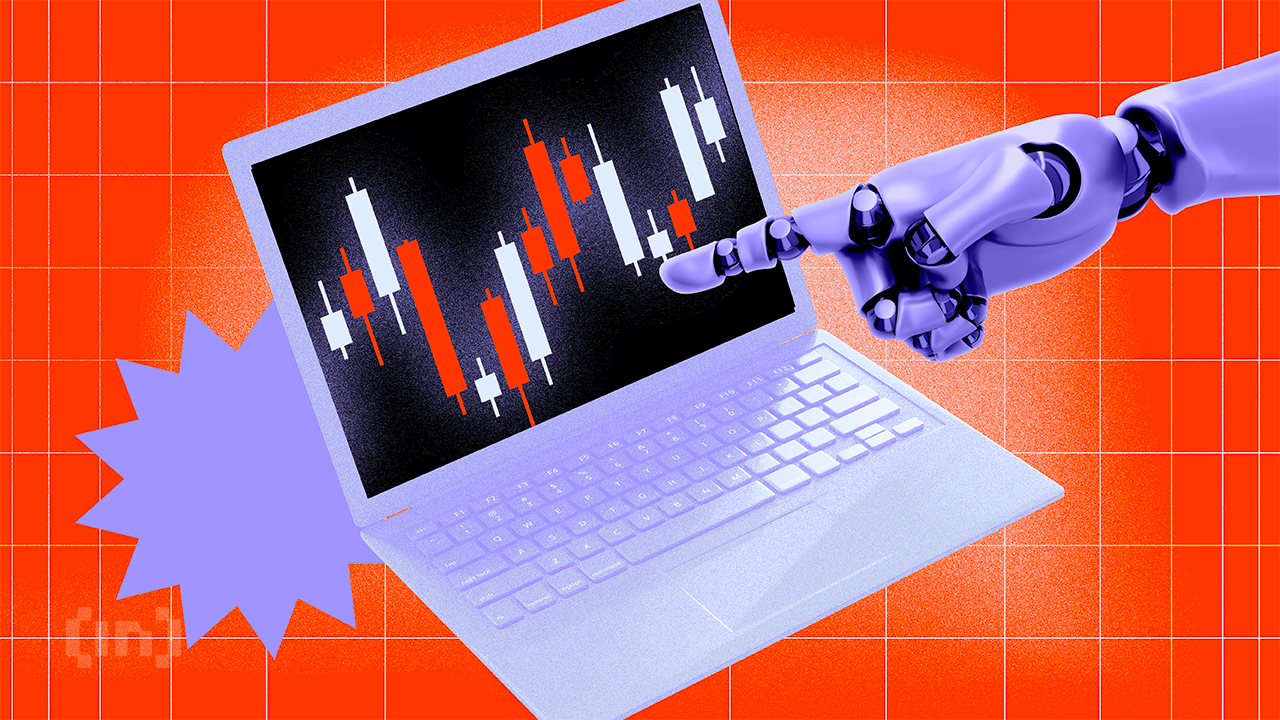Market capitalization provides a clear insight into a company’s value. This valuation is pivotal in enabling stakeholders and others to make informed investment choices. Additionally, it offers a comprehensive view essential for acquisition evaluations and strategic budgeting and helps investors forecast a company’s future earnings. In this article, we dissect the concept of market capitalization, its calculation, and its significance in crypto.
KEY TAKEAWAYS
➤ Market capitalization reflects a company’s or cryptocurrency’s total market value based on outstanding shares.
➤ Higher market capitalization often suggests stability, while lower caps indicate potential growth and risk.
➤ The market cap formula for cryptocurrencies involves multiplying asset price by circulating supply for valuation.
➤ Investors use market cap to evaluate an asset’s (or company’s) size, risk, liquidity, and potential for growth.
What is market capitalization?

Market capitalization, often referred to as market cap, represents the collective market worth of a publicly traded corporation’s shares. It exclusively encapsulates a company’s value in the market, disregarding its financial obligations or indebtedness.
To calculate a company’s market cap, you can multiply the number of outstanding shares by the price-per-share. This resulting figure establishes the market cap size, which ranges from nano-cap to mega-cap and usually mirrors the company’s associated investment risk.
SponsoredMarket capitalization formula
Let’s use an example to illustrate the calculation: Say we want to calculate the market capitalization of Tom Corp on May 3, 2017.
- Number of shares issued by Tom Corp = 20 million shares
- The market price of Tom Corp’s stock at the time = $20 per share
To determine Tom Corp’s market capitalization, multiply the number of shares (20 million) by the stock price ($20 per share), which results in a market cap of $400 million.
Interpreting market capitalization
Market capitalization is often used to classify companies into different categories based on their market value. These categories include:
- Nano-cap: Market capitalization below $50 million. Nano-cap companies are the riskiest to invest in. They tend to be newer or smaller firms, often in the early stages of their business lifecycle. Due to their size, they might not have established track records or robust financials.
- Micro-cap: Market capitalization between $50 million and $300 million. Often referred to as penny stocks, micro-cap companies are relatively young and offer an equal potential for growth and decline.
- Small cap: Market capitalization ranging from $300 million to $2 billion places a company in the small-cap category. Investing in small-cap companies is often regarded as a high-risk endeavor, but it can yield higher returns that correlate with the company’s gradual growth over time.
- Mid-cap (medium cap): Market capitalization between $2 billion and $10 billion. Investing in mid-caps is considered less risky when compared to smaller-cap enterprises. Mid-cap companies typically represent fast-growing entities that have transcended their small-cap origins.
- Large-cap: Market capitalization exceeding $10 billion. Investing in large-cap companies offers a level of stability and reliability that is reassuring for investors.
- Mega-cap: Market capitalization of more than $100 billion. Mega-cap companies generally offer low returns but considerable security on investments. Examples of these companies include Apple, Microsoft, and Amazon.
Investor sentiment
Market capitalization mirrors investor sentiment: a low market cap often signals investor doubts about the company’s prospects, whereas a high cap indicates optimism.

“You get recessions, you have stock market declines. If you don’t understand that’s going to happen, then you’re not ready, you won’t do well in the markets.”
Peter Lynch, American investor: Investopaper
Share price and market capitalization are influenced by expectations for a company’s future growth. High-growth projections can lead to a higher market cap, while low-growth or declining projections may result in a lower market cap.
Market capitalization matters when companies want to buy other companies. Bigger companies often buy smaller ones, especially micro and small caps, helping the larger entity to grow without too much risk.
Market cap calculation for stocks
Similar to the earlier example, we determine the market cap for stocks by multiplying the number of shares by the price-per-share. To express mathematically, Market Cap (MC) = number of shares outstanding x share price.
However, unlike market cap, float-adjusted market cap (sometimes called free-float market cap) is used for several widely-known stock indexes like the S&P 500 and the Dow Jones Industrial Average. These stocks use float-adjusted market cap, as well as major index funds and exchange-traded funds.
We calculate the float-adjusted market cap using only shares available to the general public and exclude locked-in shares, such as those held by institutions and government agencies.
For example:
Let’s consider a company, which we’ll refer to as “Company Ade.” The company holds 50 million publicly tradable shares and 30 million restricted shares, mostly held by executives. In the current assessment, we value the stock at $45 per share.
In this case, you’re given the float (shares available for trading) and restricted shares. To determine the market cap, we’ll calculate the shares outstanding by adding the float and restricted shares:
- Float: 50 million shares (which is 50 10^6)
- Restricted shares: 30 million shares (which is 30 10^6)
- Number of shares outstanding = Float + restricted shares
- Number of shares outstanding = 50,000,000 + 30,000,000
- Number of shares outstanding = 80,000,000 (or 80 10^6)
- Share price: $45 per share
Note: The number of shares outstanding is the sum of float and restricted shares.
Using the formula:
- MC = 80,000,000 shares at $45 per share
- MC = $3,600,000,000
You can simplify this to $3.6 billion. So, the market capitalization of Company Ade is $3.6 billion.
Market cap calculation for cryptocurrencies

Similarly, you can determine the market capitalization of cryptocurrencies. This involves multiplying the price of a crypto asset by its circulating supply.
To illustrate this in practice, consider Ethereum, a mid-cap cryptocurrency with a circulating supply of 120,345,066 ETH and a price of $2,408.50 (as of Sept.19, 2024).
Market cap = market price × circulating supply
120,345,066 X ETH $1,665.87 = $289,850,755,030 is the market cap of ethereum.
Note: This calculation can be applied and calculated in other fiat currencies.
For those seeking to ascertain the market capitalization of widely recognized cryptocurrencies, resources such as our BeInCrypto price tracker can be utilized. The platform provides comprehensive information regarding established coins and tokens.
SponsoredNevertheless, it is worth noting that emerging cryptocurrencies, tokens, and initial coin offerings (ICOs) may not be readily available on many data websites.
Market capitalization vs. other metrics
In addition to market capitalization, numerous other metrics provide crypto investors with effective frameworks for conducting fundamental analyses of cryptocurrencies. Let’s juxtapose these metrics alongside market capitalization for a comprehensive assessment.
Market cap vs. assets vs. revenue
| Metric | Definition | Source of value | Financial insight | Notes |
|---|---|---|---|---|
| Market capitalization | Represents market perception of the company’s value based on share prices. | Derived from the total worth of all shares. | Reflects market perception, not necessarily the company’s financial health. | Can be high even if the company reports modest revenue. |
| Assets | Includes tangible and intangible possessions owned by the company with intrinsic or potential value. | Tangible and intangible assets owned by the company. | Provides a clearer picture of the company’s financial stability. | Shows physical and non-physical items like property, patents, etc. |
| Revenue | Quantifies financial gains from sales and operational activities. | Income from the company’s operations and sales. | Shows the company’s actual income from its business activities. | Revenue doesn’t always correlate directly with market cap. |
Market cap, trading volume, and volume-to-market-cap ratio
| Metric | Definition | Purpose | Impact |
|---|---|---|---|
| Market capitalization | Total value of an asset, calculated by multiplying its price by the circulating supply. | Shows the overall market value of the cryptocurrency. | Affects the asset’s worth and overall perception in the market. |
| Trading volume | The total amount of an asset traded over a specific period, indicating investor activity. | Reflects the level of investor participation and interest in the asset. | Higher trading volumes often correlate with higher liquidity and market activity. |
| Volume-to-market-cap ratio | A metric comparing trading volume to market cap, indicating an asset’s liquidity. | Measures how liquid and tradable the asset is in the market. | A high ratio suggests a liquid, stable market; a low ratio indicates less liquidity and more volatility. |
The significance of market capitalization
Market capitalization represents the total dollar value of a company’s outstanding shares of stock, providing a snapshot of a company’s size and its relative worth in the market. Here are some other vital details about market cap:
- Company size and stability: Market cap provides investors with a quick way to gauge a company’s size. Generally, larger market-cap companies are more stable and established. They have likely weathered market challenges and are often seen as safer investments.
- Risk and growth potential: Smaller companies with smaller market caps are often viewed as having more growth potential. However, they also carry higher risks, as they may not have a proven track record or established market presence. Investors can choose companies with different market caps to balance their risk and return preferences.
- Dividends: Larger companies with substantial market caps often have the resources to pay dividends regularly. Investors seeking income from their investments might prefer companies with larger market caps for their consistent dividend payments.
- Diversification: Investors can diversify their portfolios by investing in companies with various market capitalizations. This approach allows for a mix of stability and growth potential, reducing overall risk.
Market cap of crypto over time
The market capitalization of an asset can change over time due to fluctuations in the number of outstanding shares or tokens. This is especially common in cryptocurrencies with an unfixed supply.
In cases where new tokens or coins are frequently issued, a different formula is used to estimate potential market capitalization, known as diluted market cap:
➤ Diluted market cap = diluted shares outstanding × current market price per share
For example, consider Bitcoin, trading at $61,902.09 per coin on Sept. 19, 2024, with 19.75 million (19,756,015 BTC) in circulation and a total possible supply of 21 million:
Diluted market cap = $61,950 x 21 million = $1.3 trillion ($1,300,111,277,242)
Analysts use diluted market cap to anticipate price changes. If all 21 million BTC were in circulation, their price would need to drop to maintain a market cap of $1.3 trillion.
Sponsored SponsoredThis affects assets with large unissued tokens and exposes them to greater risks of price drops.
What factors that affect the market capitalization of crypto?
Cryptocurrency market capitalization reflects its overall dollar value based on outstanding coins. However, it’s more than just a product of price and supply.
Factors like supply-demand dynamics, industry trends, financial performance, effective management, and inherent token supply mechanisms collectively influence this valuation. Here are some examples of those elements that affect market cap in crypto:
- Industry trends: The performance of the broader industry or sector to which a cryptocurrency belongs can exert a profound impact on its market capitalization. In times of robust industry growth, optimism about a company’s future prospects may lead investors to pay a premium for its tokens.
- Market conditions: The overall condition of the broader financial markets plays a crucial role in shaping crypto market capitalization. During a bullish market phase, investors may exhibit a willingness to acquire cryptocurrencies at higher valuations, whereas during a bear market, caution prevails, and lower prices are demanded.
- Token supply: The supply of tokens is a pivotal factor influencing the price of a cryptocurrency. In cases where the token supply is limited, the price tends to rise.
- Node count: The node count serves as a metric that reflects the quantity of actively engaged wallets within a given network. A heightened node count signifies a thriving and resilient community, while a diminished node count conversely conveys a lack thereof.
Implications of crypto market capitalization
Market capitalization in the cryptocurrency market holds significant implications for investors. Here are some key considerations to include:
- Volatility: Investment risk is closely tied to price fluctuations. Large-cap cryptocurrencies exhibit lower volatility, offering more stability during turbulent market conditions. Mid-cap coins are more volatile, and small-cap tokens can swing significantly, increasing risk.
- Liquidity: Determines how easily you can buy or sell assets without affecting their prices. Large-cap cryptocurrencies typically have higher liquidity due to strong demand, making transactions smoother. Mid-cap and small-cap tokens, in contrast, exhibit lower liquidity, which can complicate trading.
- Growth potential: Large-cap crypto coins have lower growth potential than mid- and small-cap counterparts. They are a stable choice for long-term investors with a low-risk tolerance.
Market cap in investment and financial analysis

Cryptocurrencies are categorized into three main groups based on their market cap: small-cap, mid-cap, and large-cap.
When assessing crypto assets with varying market caps, the length of your investment horizon plays a significant role in risk management. Longer timelines offer more opportunity for your portfolio to recover from volatility.
Long-term investors, such as those planning for retirement decades away, may benefit from the growth potential of small- and mid-cap cryptocurrencies while having time to weather market downturns.
Conversely, investors seeking lower risk may prefer to anchor their portfolio in less volatile large—and mega-cap assets, with a smaller allocation to small—and mid-caps.
Market capitalization in financial decision-making
In financial analysis, market capitalization serves as a key metric beyond just cryptocurrency prices. It helps assess whether an asset is stable, solvent, liquid, or profitable enough for investment. It also indicates a cryptocurrency’s growth potential and relative safety compared to others.
Overall, while analyzing a cryptocurrency’s market capitalization is vital, it’s crucial to integrate it with metrics like trading volume, supply dynamics, and other pertinent indicators to ensure a holistic and accurate valuation.

